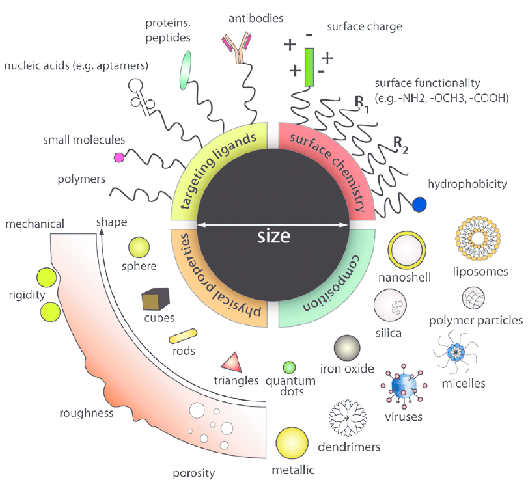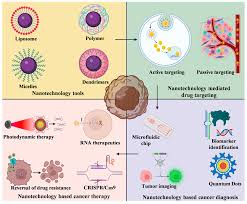Introduction:
Cancer treatment often suffers from limitations due to widespread drug distribution and unintended effects on healthy tissues. Nanomedicine presents a potential solution by utilizing nanoparticles (NPs) designed to deliver drugs specifically to tumor cells. This blog post explores the principles behind nanomedicine in cancer therapy, highlighting recent advancements and future directions in this evolving field.
Nanoparticle Design for Targeted Drug Delivery:
Effective nanomedicine relies on the development of NPs with specific characteristics:
- Size and Surface Properties: NPs are typically sized between 1-100 nanometers, allowing them to passively leak out of blood vessels within tumors (enhanced permeability and retention effect, EPR effect) and accumulate in the tumor environment. PubMed The surface of NPs can be decorated with molecules (e.g., antibodies, peptides) that specifically bind to receptors on tumor cells, promoting active targeting and uptake by the tumor cells.
- Drug Encapsulation and Release: NPs can encapsulate various therapeutic agents, including chemotherapy drugs, biological agents, and imaging agents. Strategies are being developed for controlled drug release within the tumor in response to specific conditions like acidity or enzymatic activity. This approach aims to improve therapeutic efficacy while minimizing systemic exposure to the drug.

Recent Advancements in Nanomedicine for Cancer Therapy:
Several types of NPs are being actively investigated for targeted drug delivery in cancer:
- Liposomes: These sphere-shaped structures made of phospholipids offer a versatile platform for encapsulating various drugs. Liposomal formulations of doxorubicin (Doxil) and daunorubicin (DaunoXome) are already approved for clinical use in cancer treatment.
- Polymeric Nanoparticles: Synthetic polymers provide a diverse range of options for NP development. Polymeric micelles and nanoparticles can be engineered for controlled drug release and targeted delivery.
- Exosomes: These naturally occurring nanovesicles derived from cells hold immense potential for targeted drug delivery due to their biocompatibility and inherent targeting capabilities.

Conclusion:
Nanomedicine offers a revolutionary approach to cancer treatment by enabling targeted drug delivery and potentially reducing off-target effects. With ongoing research to address existing challenges and explore novel strategies, nanomedicine has the potential to transform the future of cancer therapy, leading to improved patient outcomes and personalized treatment options.